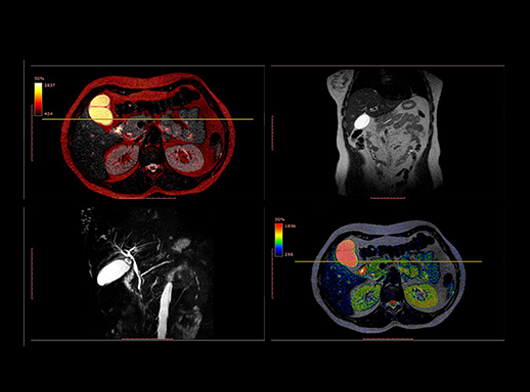
Magnetic Resonance Cholangio - Pancreatography (MRCP)
Introduction
It uses a powerful magnetic field, radio waves and a computer to evaluate the liver, gallbladder, bile ducts, pancreas and pancreatic duct for the disease, if any. It produces detailed images of the hepatobiliary and pancreatic systems.
Features
- It is a non-invasive imaging technique that does not involve exposure to radiation
- It can provide detailed images of the soft-tissue structures of the body
- MRCP procedure takes only 10-15 minutes
Indications and procedures
- Diseases of the liver, gallbladder, bile ducts, pancreas and pancreatic duct including tumors, stones, inflammation or infection.
- Evaluation of patients with pancreatitis to detect the underlying cause in patients with pancreatitis.
- Read More
Advantages
It is a non-invasive and does not involve exposure to radiation
- MRCP can produce images comparable to those obtained by a more invasive exam called endoscopic retrograde cholangiopancreatography (ERCP) without its associated risks including pancreatitis, or inflammation of the pancreas, perforation of pancreatic and bile ducts and bowel, and the risks for intravenous sedation required for ERCP.
